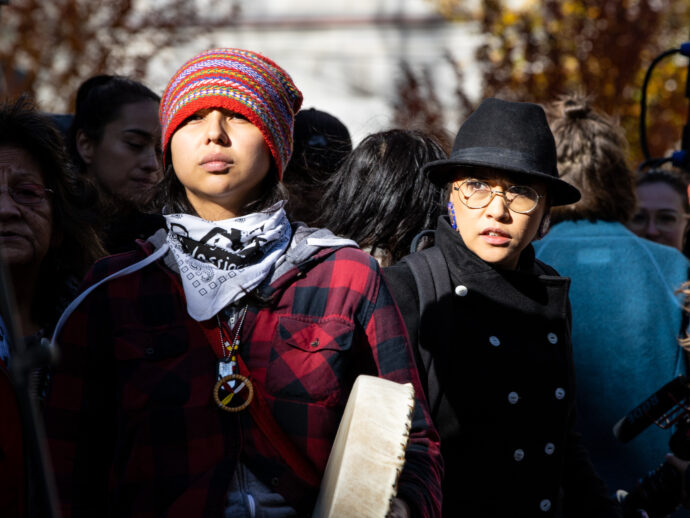
Wellness is a growing phenomenon that pushes people to make choices toward a healthy and fulfilling life. With more people practising wellness, consideration must be given to the ways in which privilege dictates its accessibility.
By looking at the social determinants of health, food security, and the medical system, the connection between privilege and wellness becomes clear. However, there are things that can be done to create lasting systemic change.
What determines a person’s health?
The Canadian Public Health Association includes the following social determinants of health:
- income
- education
- unemployment
- employment and working conditions
- early childhood development
- food insecurity
- housing
- social exclusion
- social safety network
- health services
- Indigenous status
- gender
- race
- disability
Layers of privilege are entangled within all aspects of this list—from a person’s gender identity to their career—all of which determine how healthy they are likely to be.
Food, work, and privilege
A person’s relationship to food is largely dictated by their living conditions, and having access to a variety of food is a privilege. In Canada, from 2017 to 2018, 4.4 million people lived in food-insecure households. In Indigenous households, 28.2 percent were food insecure—two and a half times higher than the average for non-Indigenous households.
Food insecurity in Canada
From 2017 to 2018, while 12.7 percent of households across Canada experienced some level of food insecurity, 57 percent of households in Nunavut reported experiencing food insecurity. Food security is directly linked to an individual’s health and wellness.
Where you live matters
Living away from city centres limits the variety of food options available. Jon Mills, community moderator at Precision Nutrition, explains, “If you have to shop in a big box convenience store because you live in the country, and you can only afford to drive out there once a month, you’re not going to buy produce; you buy frozen food, which is usually processed—something that can eventually lead to health complications.”
In Indigenous populations, the dispossession of land limits access to traditional foods, and urban, rural, and remote Indigenous populations suffer from inadequate access to affordable, healthy, and nutritious foods.
Where you work makes a difference
As Mills states, “Your work will determine your lifestyle—like when you eat—and it’s most impactful for low-income workers who don’t have choices about how they eat; they have to work with the circumstances that are given to them.”
People rushing between jobs make food choices best suited to their situation—probably something that can be purchased and eaten quickly. In this situation, being able to sit down and eat a home-cooked meal is a privilege.
Achieving wellness includes practising work-life balance, but for many, the practice is impossible. In 2019, more than 1 million Canadians worked more than one job and work an average of 45.9 hours per week.
Having things such as paid vacation, benefits packages, and flexible schedules—and only working one job—are huge privileges many Canadians do not have. People working multiple part-time jobs will not have the same benefit packages as those with full-time careers.
Systemic issues within health care
Research shows that Black, Indigenous, and People of Colour (BIPOC) are disproportionately affected by mistreatment in our health care system.
According to many wide-ranging research studies, patients who face discrimination in health care facilities are less likely to use health services, more likely to forgo important medical tests and treatments, and less willing to engage in preventive services. This has potentially life-threatening consequences.
Our definition of health can vary depending on our privilege, as well. Mills points out that what is often “sold to middle- and upper-class people as health is often very destructive for lower-class people, because it depicts health as something that is unattainable—and the further you go from major cities, the more and more unattainable this becomes. Most people’s health could be improved with just a few small changes.”
Change is possible
Reading harrowing statistics is enough to make anyone feel helpless, but there are ways in which those with privilege can leverage their position to create positive change.
Educate yourself
Learn about the intersections of the various systems of oppression at work in Canada. Understanding Canada’s true colonial history, from the residential school system to the ongoing separation of Indigenous children from their families, will help foster empathy within non-Indigenous communities.
Think locally
Reach out to local organizations who battle food scarcity, assist individuals with accessing health care, and support marginalized people. Mills also recommends that we “buy local, seasonal produce, support local farmers, and support programs that encourage sustainable agriculture and rewilding—particularly those led by Indigenous people.”
Advocate for community gardens
All people in Canada should have access to affordable, healthy food. Pushing for and funding community gardens in remote communities across the country is a surefire way for those who cannot access health food stores or organic produce to access healthy food affordably.
Promote surplus food redistribution
There are also programs across the country that take unsellable yet edible food from farmers, grocers, and health food stores and donate it to programs that distribute food to those who are experiencing homelessness or living in low-income households. Ensuring your local grocers are participating in such services tremendously benefits those in your community.
Support Indigenous communities
The challenges Indigenous people face are ongoing, so beyond pressuring the government to raise household income above the poverty line, their communities need access to safe, affordable housing, affordable nutritious foods, parental and early childhood education, and cultural activities.
Access to these resources will improve the community’s social determinants, which in turn will improve their overall well-being. Getting involved in initiatives that support Indigenous communities, as well as those that help with land sovereignty, will have long-lasting positive effects. Being able to practise traditional forms of harvesting, hunting, and foraging helps remote communities fight against food scarcity.
While acknowledging and understanding how privilege, health, and wellness are intertwined can feel overwhelming, there is so much room for improvement. All it takes is one person to start making a change.
Want to learn more?
There have been many excellent books written that further illustrate the intersections of wellness and privilege. Here are just some of them:
- <Me and White Supremacy: Combat Racism, Change the World, and Become a Good Ancestor> (Sourcebooks, 2020) by Layla F. Saad
- <This Book is Anti-Racist: 20 Lessons in How to Wake Up, Take Action, and Do the Work> (Frances Lincoln Children’s Books, 2020) by Tiffany Jewell and Aurelia Durand
- <The Broken Ladder: How Inequality Affects the Way We Think, Live and Die> (Viking, 2017) by Keith Payne
- <Doing Harm: The Truth About How Bad Medicine and Lazy Science Leave Women Dismissed, Misdiagnosed, and Sick (HarperOne, 2018) by Maya Dusenberry
- <Braiding Sweetgrass: Indigenous Wisdom, Scientific Knowledge, and the Teachings of Plants> (Milkweed Editions, 2015) by Robin Wall Kimmerer
- <The Haida Gwaii Lesson: A Strategic Playbook for Indigenous Sovereignty> (Inkshares, 2017) by Mark Dowie







